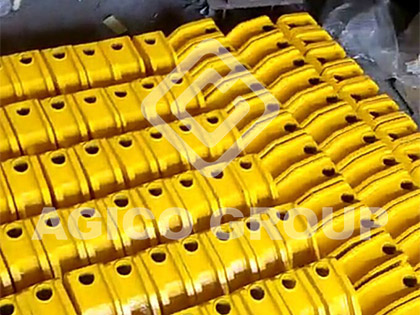Railway track development and steel rail production overview
How was railway track created
The earliest railway track originated in the United Kingdom. It has been 192 years since the opening of the first commercial operation of Darlington to Stockton in 1825. In addition to the invention of steam locomotives, the reason why railways can dominate the world within a short period of time after birth was that the invention of railroad tracks was widely used and popularized.
Steel Rail-Important Part in Railway Track System
Regardless of ordinary green leather trains or high-speed trains, they all need to run on railway tracks, and steel rails are an important component of railway tracks. The steel rails are also parts that are in close contact with the wheels of the train. Steel rails quality directly affects the efficiency of rail transportation and the safety of railway track system.

Steel Rail Production Procedure:
It is not easy to manufacture steel rails with excellent performance. Here are high-tech technologies required for rail manufacturing?
According to the production process, the production of steel rails is divided into three steps: Smelting,Rolling and Finishing. Of course, the final centralized inspection and long-length rail production are also required.
Refining Raw Steel
The first is the “refining” technology for steel used in rails, including the pretreatment technology for pig iron desulfurization, the oxygen top blowing converter smelting technology, the off-furnace refining, vacuum degassing, and bloom continuous casting technology.

Converter steelmaking process
Why desulfurization? Avoiding pollution is on the one hand. Through advanced equipment and technologies such as desulphurization pretreatment, refining outside the furnace and vacuum degassing, steel can be made cleaner. For example, the refining technology outside the furnace can further adjust the composition of molten steel and the temperature of molten steel, reduce the inclusion content, and ensure the accuracy of molten steel composition during tapping; vacuum degassing of molten steel further reduces the content of hydrogen, oxygen, and other gases dissolved in the molten steel. Reduce the impact of these gases on the performance of rail steel.

Continuous casting Technology
The use of bloom continuous casting process can effectively prevent secondary oxidation of molten steel during casting, reduce inclusions in the steel, and significantly improve the surface quality of the billet.
Followed by the "finishing" technology of rails, including step heating furnace heating, high pressure water descaling, universal mill rolling and rail pre-bending. Step heating furnace can make the billet evenly heated; high pressure water descaling can guarantee the surface quality of the rail; and then through universal rolling technology production, the use of hot pre-bending can reduce residual stress and straightening noise.

China's independent research and development of universal mill high-speed rail production line, the scale of production of passenger railway of 350 kilometers per hour.
Steel Rail Finishing
The third is the “finishing” technology of rails, including horizontal compound straightening, four-face hydraulic repair, joint sawing machine tool length and drilling, etc.
Centralized Detection Technology
The fourth is the centralized detection technology of rails, including ultrasonic flaw detection, eddy current flaw detection, laser-assisted flatness, and automatic detection of rail geometry;

Rail Electric Inspection Vehicle
The fifth is the long-sizing production technology of steel rails. This technology can maintain uniform height of the entire rail, welding joints, and high rail smoothness.
Steel Rails AGICO Supply:
The type of steel rail is classified by kilograms per meter of rail length. For example, steel rails used in China's railways are 75kg/m, 60kg/m, 50kg/m, 43kg/m and 38kg/m.
Classified by Application: AGICO supplies crane rail( QU120,QU100,QU80,QU70), heavy rail( 38, 43, 50, 60, 75kg) and light rail( 9、12、15、22、30kg/m).
Stee rail in foreign standards: British Standard: BS series (90A, 80A, 75A, 75R, 60A, etc.) German standard: DIN series crane rails. International Railway Union: UIC series. American Standard: ASCE series. Japanese standard: JIS series.
We receive enquiries in English, Español (Spanish), Русский язык (Russian), Français (French) and العربية (Arabic). Our professional team will reply to you within one business day. Please feel free to contact us!




